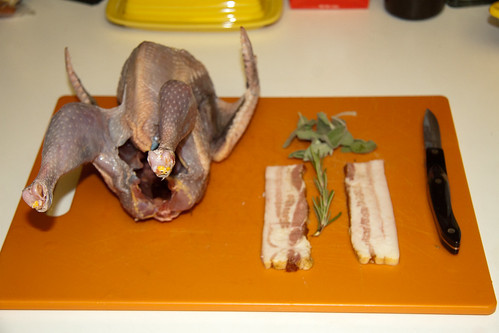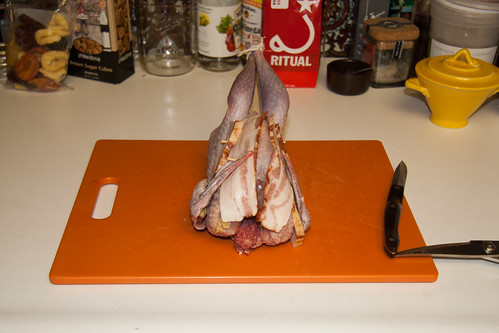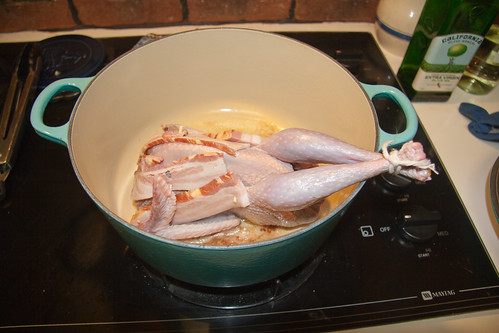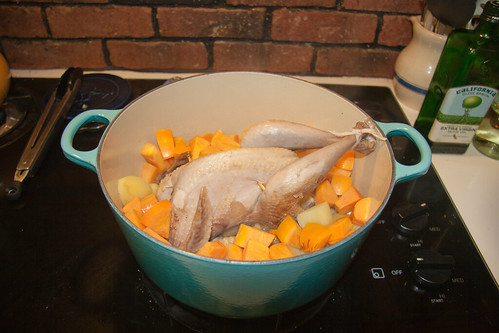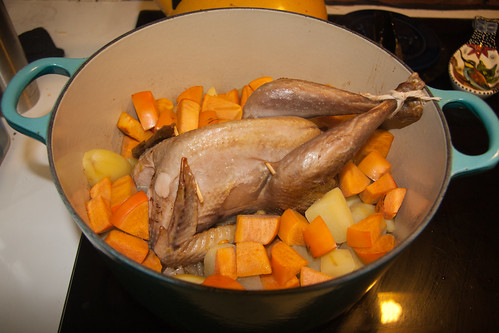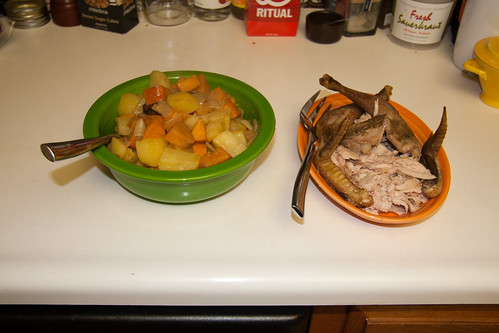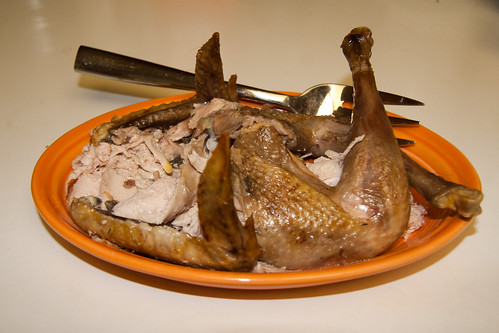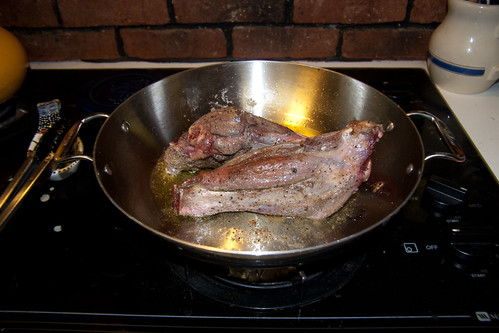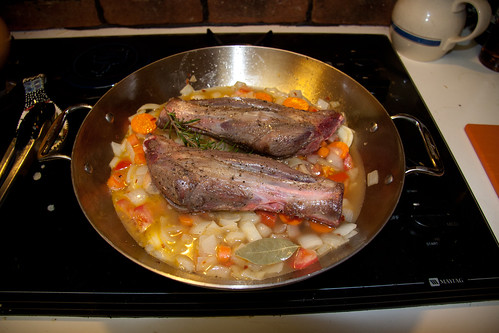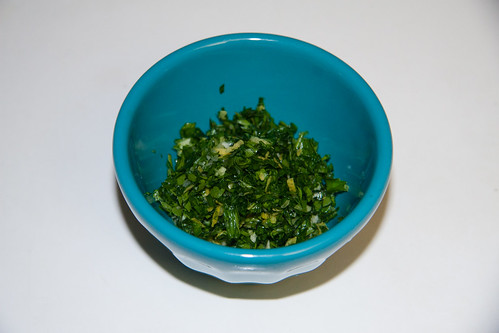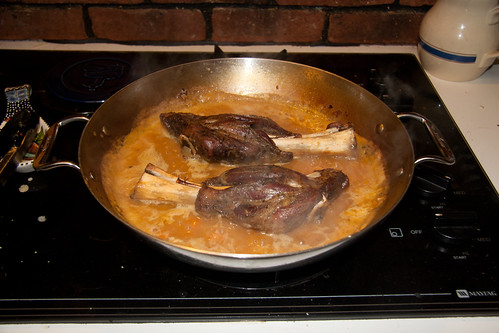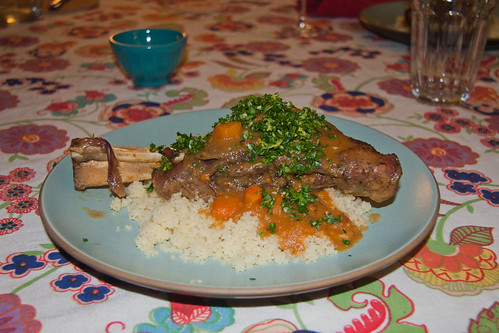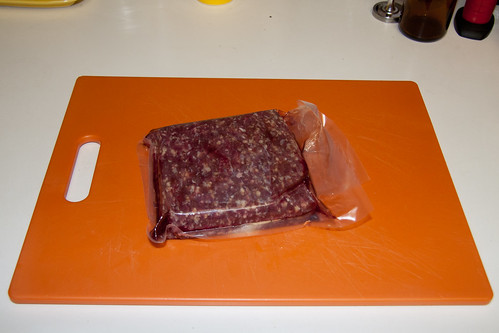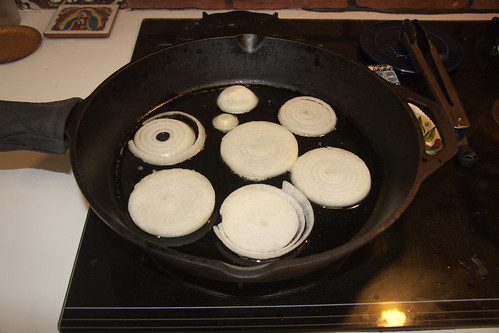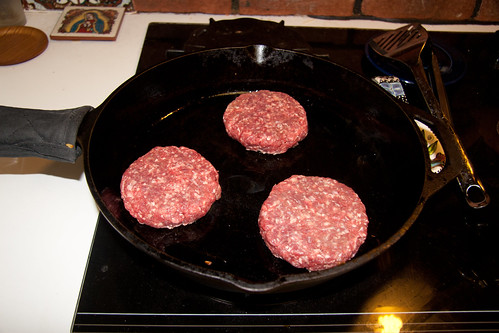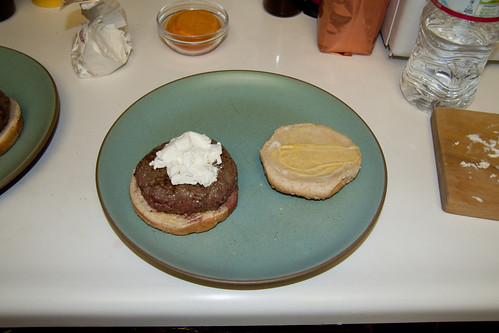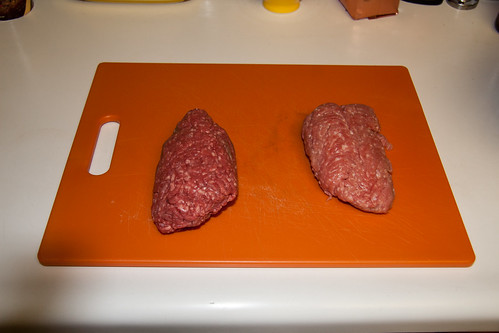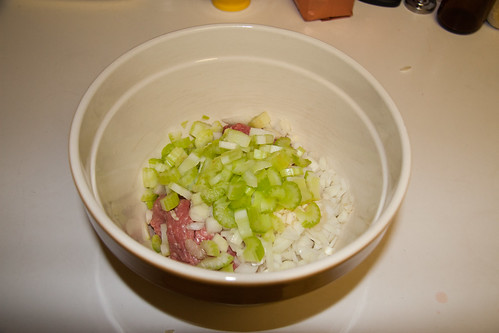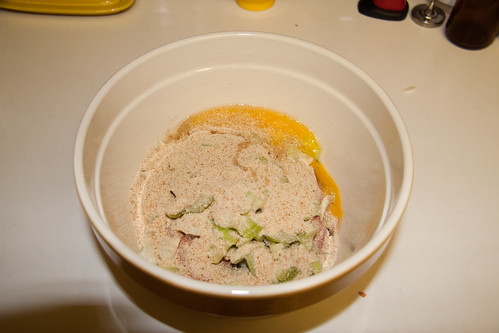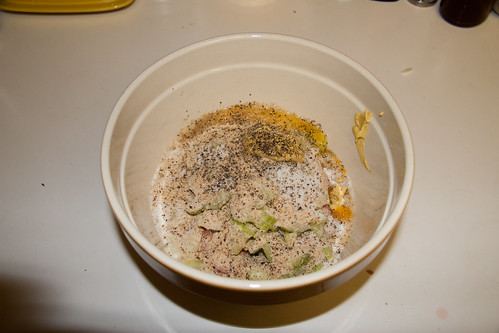Two years ago, we escaped rainy Portland to celebrate New Year’s Eve in sunny Palm Springs. As I mentioned earlier this year, our trip involved a stop at Shields Date Garden, where we sampled many a date, including the wonderfully sweet Barhi. Barhis are small and round, with a slightly parchment-like skin surrounding extremely sweet flesh. They are also quite fragile, easily crushed into a discolored mush. As with the Deglet Noors, I was able to get a package of Barhis from Leja Farms via Siegfried Dates at the Davis Farmers Market. I knew immediately that I would use these for date milkshakes, an Indio, CA specialty I’d been longing to recreate.
The date milkshakes we had at Shields used a special mix of dates, date sugar, and (as I recall) date ice cream. Lacking both the know-how and the variety of date products to follow in their footsteps, I improvised a recipe, looking to date complementing flavors of vanilla and bourbon to elevate my shake.
I began by pitting and chopping a cup of dates and covering them with four ounces of Maker’s Mark bourbon. I chose Maker’s Mark for its sweetness. Other wheated bourbons would work, too, but I think a rye heavy bourbon would add a discordant spiciness.
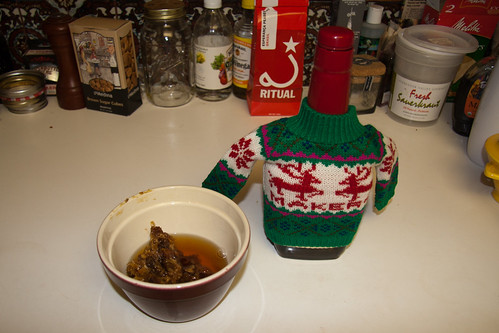
I put four or five scoops of vanilla ice cream into a blender along with four ounces of whole milk. I added the whiskey and dates, then fired up the blender.
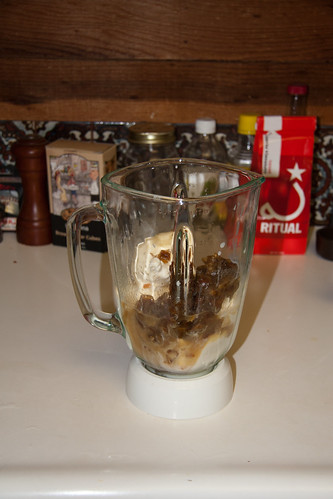
The shakes were looking too thin, so I added a few more scoops of ice cream and blended some more.
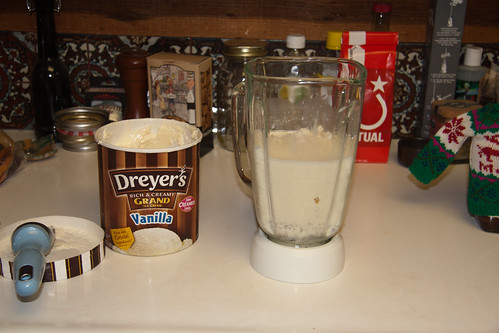
After the second round of ice cream, the shakes blended up nicely. They poured a little thinner than my ideal, but still had some good ice cream chunks. The dates, unfortunately, mostly sank to the bottom and required regular stirring while drinking. The bourbon was very pronounced, but the shake was still smooth, creamy, and datey.

In the future, I would probably forgo the milk entirely, since the bourbon provides plenty of liquid, and the alcohol causes the ice cream to melt faster anyway. I would also macerate the dates in the bourbon for a day in advance, and maybe try to work a little date sugar into the mix to bring the date flavor to the fore. More photos of the date shake process are here.
This is the last Fifty Two Foods post, and fittingly I’m writing it on the last day of the year. Thanks for reading. I hope that some of these posts either introduced you to a new food or a new cooking idea. I count seven foods I hadn’t heard of before I wrote about them, and around half the weeks featured things I’d never cooked before. I’ve also realized that without bacon and its cousins, I would have a very hard time coming up with meals. I hope your 2012 is filled with good food; I know mine will be.

